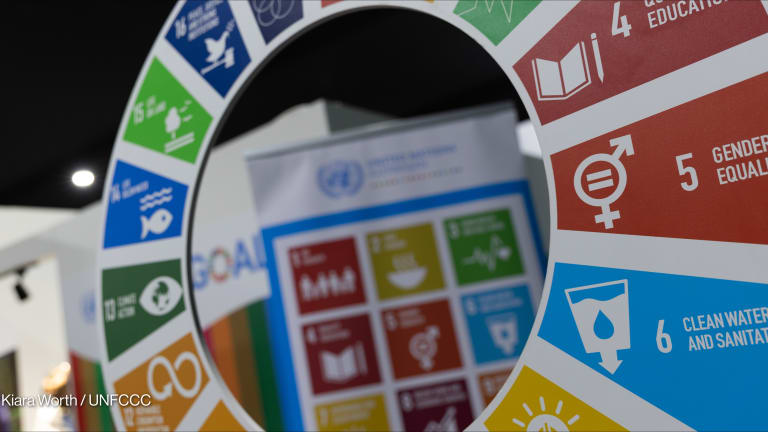
SAN FRANCISCO — While 2018 was a crisis year for Facebook, it has been a year of scale for its Data for Good team, which has tripled its number of Disaster Maps partners since 2017.
Last year, Facebook launched a new Disaster Maps initiative to provide anonymized and aggregated location information from users who have their location settings enabled in the form of density maps, Safety Check maps, and movement maps.
“By having some of our early partners really transform into super users, becoming the people who can actually help build a community of practice, to some extent the demand for Disaster Maps has grown organically.”
— Laura McGorman, Data for Good portfolio manager, FacebookInitial partners included the U.N. Children’s Fund, the International Federation of Red Cross and Red Crescent Societies, and the World Food Programme, which all have data-sharing agreements with the company. When disaster strikes, these datasets provide critical insights into where help is needed, leading a growing number of organizations to join the Disaster Maps initiative. And this despite concerns about the risks of partnering with Facebook as the company comes under scrutiny for privacy and security.
In June of last year, Facebook worked with half a dozen nonprofits and United Nations agencies on Disaster Maps, but that number has grown to 30, said Laura McGorman, who manages the Data for Good portfolio at Facebook.
“It really has been the year of scale,” she told Devex,
The key has been to keep the barriers to entry low, with a straightforward click-through data licensing agreement, while also having a strong vetting process for new partners, McGorman explained.
“The main thing that was at the core of being able to grow these partnerships in a pretty challenging year was just to remind people that there has been a very deep focus on privacy by design since the inception of Disaster Maps,” McGorman said.
She often has to reassure organizations, for example by explaining that she reports to the chief data protection officer at Facebook, or by talking through basic questions such as how data is shared, with whom data is shared, and why data is shared.
“By having some of our early partners really transform into super users, becoming the people who can actually help build a community of practice, to some extent the demand for Disaster Maps has grown organically,” McGorman added.
Examples include NetHope, a coalition of NGOs that bring connectivity to areas struck by disaster, which has educated its members about ways to partner with Facebook on Disaster Maps.
“When we started using Facebook, it was primarily about raising money, but now Facebook is an operational tool,” said Andrew Schroeder, director of research and analysis at Direct Relief, a humanitarian aid organization based in Santa Barbara, California.
With its new facility, Direct Relief is now the largest distribution hub for global humanitarian medical aid in the U.S., and the organization relies in part on Facebook data to understand where people are before, during, and after a disaster.
Schroeder was concerned that Facebook had gotten itself into so much trouble that its work on Disaster Maps and other Data for Good initiatives, might come to an end. Ahead of Facebook CEO Mark Zuckerberg’s testimony before the U.S. Congress, Facebook reached out to some of its Data for Good partners, hoping for their help to point to the value of the platform, he said. Schroeder worked on a “letter of support” outlining the value of Disaster Maps as well as Facebook’s decision to remove fundraising fees for nonprofits.
But in the social good sector, reviews remain mixed. Drew Bernard, founding partner at UpSwell, which helps mission-based organizations leverage social platforms such as Facebook, does not think the company is doing enough to help NGOs leverage their platforms for good.
“On the product development front, social good efforts are focused at end users first with little understanding of the needs of NGOs. Other social good initiatives look more like one-off campaigns rather than empowering millions of social sector orgs to succeed on the platform — enabling a thousand flowers to bloom. The result is that the platform is enabling far less good than it should be,” he wrote in an email.
Direct Relief and other Disaster Maps users say Facebook has made some of its datasets more challenging to access. Disaster Maps partners have long been pushing for application program interfaces, or APIs, which would make it easier for NGOs to integrate Facebook data with their own data systems. But Facebook still requires that users go into a password-protected portal called GeoInsights, and the company is not likely to grant this request anytime soon.
The company is learning from its partners. Direct Relief, for instance, worked with Facebook to combine its health center data with population movement data from Disaster Maps. And moving forward, Facebook is exploring other areas where its data can have meaningful impact on the ground beyond natural disasters. Facebook has released new tools this year, including network coverage maps, long-term displacement maps, and power availability maps.
“Any time you’re building a new technology, there will be people who adopt it very quickly and help you push the envelope of what the data can be used for,” McGorman said.
Direct Relief has been an example of that, she added. A major concern about Facebook data is that it is not representative, because it only represents users. But Direct Relief has explained that social media insights on how people move during a disaster are unlike anything else the organization has access to.
“It’s amazing to be involved in that kind of collaborative work in the nonprofit space where it’s the partners who are pulling us forward,” McGorman said. “They help set the direction or where we need to be going.”








